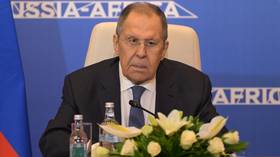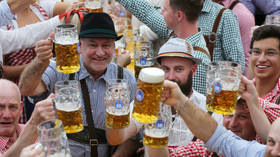European churches struggle to attract worshippers
As millions of Christians celebrate Easter, statistics show grim prospects for the faith in Europe, challenged by a decline in population, growing numbers of Muslims, and people who do not affiliate themselves with any religion.
Europe can still boast pompous ceremonies at holy sites, gathering thousands of people. Yet, more and more claim that they don’t belong to any confession, and tiny local churches are resorting to any measures to bring the flock back.
RT’s Peter Oliver has found more visible evidence for the decline of the Christian religion – in European churches now surreally turned into museums, or even – in one case – a skate park.
This church was in the Netherlands and witnessed days when it was attended only by a couple of people, after which the sacred place was turned into a skate park. Statistics reflect this nonattendance; more than 40 percent of the country’s population does not see itself as belonging to any religious denomination.

Germans are marginally more conservative, with just under a quarter of non-believers constituting part of the total population, but some of the churches in the rural areas there are left unlocked 24 hours a day – only to attract all possible visitors. Another way to remind people of their own existence all-year-round is to draw a congregation by adding an unusual Christmas scene – with Mary, Joseph and baby Jesus made of tree trunks – or an installation of the Last Supper.
“All the churches have a guest book. I saw in there a suicide note, someone who had decided they were going to take their own life,” Sonja Hahn, chairwoman of the Determined Churches Foundation told RT’s Peter Oliver. “Then a while later, in the same handwriting, that person was saying that being able to come to this place had convinced them otherwise. I think that says just why they should remain as places of prayer.”
READ MORE: Losing faith: Atheism rising in Britain, poll suggests
It’s hard for statisticians to remain optimistic, as the latest data reveals a trend of religiosity growing around the world – yet in the US and in Europe it is atheism that is on the rise. The number of atheists, agnostics and people who do not identify with any religion in Europe is projected to rise by some 16 percent by 2050, according to recent Pew Research Center study.
Europe is the only region projected to see a decline in its total population between by the middle of the 21st century, which would also affect the number of Christian church goers. Overall, the number of European Christians is projected to decrease by some 100 million, falling almost 18 percent from 553 in 2010 to 454 million in 2050.
Europe’s Jewish population also is expected to shrink, from 1.4 million in 2010 to 1.2 million. But the remaining religious groups in Europe are projected to grow in number due to a combination of higher fertility, younger populations and net gains via migration and religious switching.
READ MORE: Global Muslim population to surpass Christians by 2070 – study
Still globally, the ranks of all major religions, except Buddhism, are likely to expand, with the number of Muslims nearly reaching the number of Christians – and surpassing it by 2070, according to Pew study.
“If current demographic trends continue, Islam will nearly catch up by the middle of the 21st century,” the Washington-based think tank said in the study. “Between 2010 and 2050, the world’s total population is expected to rise to 9.3 billion, a 35 percent increase."
"Over that same period, Muslims – a comparatively youthful population with high fertility rates – are projected to increase by 73 percent. The number of Christians also is projected to rise, but more slowly, at about the same rate as the global population overall.”












